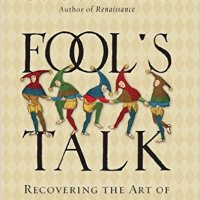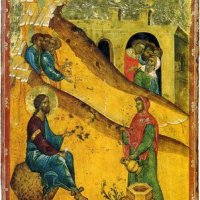The birth of Pentecostalism (1906) and the Charismatic movement (1960) are together a major turning point in the history of Christianity. Despite these being relatively historically-recent developments, their brief time on the scene have proved to be enormously significant for the spread of Christianity across the globe in the 20th century and beyond.
Pentecostalism got its start at the Azusa Street Revival in Los Angeles in 1906, but the movement has grown so much in the last 100 years that its roots are remembered mostly by historians. It seems to me the average Pentecostal believer tends to look to the last one or two recent outbreaks of revival to interpret what it means to be pentecostal (of course the foundational event for this family of churches is the feast of Pentecost when the Holy Spirit was poured out on the nascent church as recorded in Acts 2).
More than 50 years later, the rest of evangelical Christianity was introduced to Pentecostal worship, theology, and practice through the charismatic movement. Pentecostal and charismatic believers have since become more than 500 million strong, representing approximately 25% of all Christians worldwide. If trends continue, then the face of Christianity in 2112 will look very different than in 2012. While I no longer consider myself a “charismatic Christian” (especially in my theology of the Holy Spirit), I certainly can appreciate the zeal and evangelical faith of my Pentecostal and Charismatic brothers. God is working in his church throughout the world, and we all can love and learn from each other.
Mark Noll, Christian historian and author of the excellent book Turning Points explains why Pentecostalism has been (and perhaps will be) so significant in the course of Christian history. See below for a summary of Noll’s treatment of the rise and spread of Pentecostalism, along with a few links for further reading.
Why Conversion and Revival Are Biblical by Tim Keller
Pentecostal History by the Association of Former Pentecostals
Church History and the Tongues Movement by George Dollar
Tongues Today? by O. Palmer Robertson
Challenges of the Charismatic Movement to the Reformed Tradition (Part 1 | Part 2) by Richard Gaffin
What Evangelicals Can Learn from Pentecostals, by J.R. Woodward















The article is confusing, We are to understand you give commendations to a movement/experience that you no longer ascribe to? I urge you to examine the difference between Pentecostal and Charismatic teaching and to identify the particular points of concern for you. Much of what is loosely-referred to as “Pentecostal” is no such thing.
Hi Daniel,
Thanks for the comment. Actually, I admire certain characteristics of the Charismatic and Pentecostal movement–mostly their zeal for the Lord and for worshiping God. Just because I no longer subscribe to Charismatic movement doesn’t mean I have to denounce *everything* about it. Regarding your urging, what points of the pentecostal movement do you consider incorrect? Are there any points that I mention that are not “pentecostal” at all, or just not “neo-pentecostal” (which seems to me to be the dominant form in the USA these days.)? Also I recognize that some of my description of pentecostals and charismatics will not fit particular believers or churches in those traditions, but the movements are vast and varied now, and I think there is room to generalize for the purpose of description. People do that about my Reformed tradition too, and it is fine as long as it is presented as “generally” true but not true in all the particulars.
Sorry if my article was confusing. I wrote it from my perspective as a formerly charismastic Presbyterian, and I presented the slideshow to a small group of Presbyterians who have little to no experience of the charismatic or pentecostal movements. So one of my goals was to show what I believe are aspects of the movements that are compatible with Reformed theology and practice, aspects that are broadly good and evangelical but don’t fit in the Reformed tradition, and aspects that are problematic. And I only had about an hour to do so!
Peace,
Brian
Doctrinal understanding seems to come best through an awareness of doctrinal-history. The Pentecostal movement was inaugurated under a very defined set of circumstances culminating from a definite historical framework when Wesleyan “Come-Outers” from a Methodism in rejection of Holiness-teaching began to accept “tongues” as a “sign” of one having received the Holy Spirit. In fact, your Presbyterian heritage had a brief encounter with Pentecostalism in 1830 when a few Scottish ministers began to teach a distinction between “initial regeneration” (the experience of evangelicalism) and the “baptism of the Holy Spirit”. People began to experience the baptism of the Holy Spirit and Pentecostal-signs until (sadly) the movement was cut short by heretical teaching that arose at the same time. Seventy years later (on the first day of the 20th century) the Pentecostal baptism was restored upon an affirmation that “tongues” was the Scriptural-evidence of the Spirit’s reception. Pentecostals taught that this constituted baptism into the body of Christ (the church) which made them the objects of much hostility. They were resented for teaching an exclusive Christianity. But consider that Scripture presents the matter in both exclusive & inclusive terms.The doctrine concerning the inauguration of Israel is “exclusive” in terms of the church being a peculiar and separated people. It is “inclusive” in the sense that “everyone that asketh receiveth” (Luke 11:10). But too many are turned aside by poor teaching that derogates this work of the Spirit. This confusion of the very definite “Pentecostal” doctrines we have labeled “Charismatic”.
I am about 2/3 of the way through assembling an historical context for a model I plan to present in the months ahead. You are welcome to read what I have thus far prepared (lamp-stand.com) as I believe the historical-context is so vital in this day of confusion regarding the baptism.
Hi Daniel, Thank you very much for responding to my question. Most commenters don’t take the time to do so. You have an interesting perspective on the divergence of Pentecostal and Charismatic doctrine, and your teaching using the Mennorah. Are there others who share your thoughts on these things, perhaps someone who has put their thoughts into a published work? Thanks for the dialogue, Brian
I have never heard it taught. I received the baptism in 1982, entered into a period of darkness in 1990 wherein I became distressed over the lack of a coherent systemized doctrine of Pentecost. As I had petitioned God for the baptism so I petitioned Him for this doctrine. I received the rudiments during that time. However, I digressed into the secular-world & became a backslidden attorney. In 2008 I was restored in an event that very much seems to have been that which Wesley described as “instantaneous experience” of sanctification. I was then set profoundly back on the path of working to ensure these teachings are restored to the church.
I’m about 60% of the way there. I will not ask you to labor through everything I have posted to date. But if you will view the two Powerpoint slide presentations (see “Powerpoints” in the header) I would expect you would not be disappointed. It gives a good skeleton-outline of what I plan to produce in treatise.
P.S. The presentations are narrated so have your speakers turned on!
Thanks Daniel. I will take a look at your material when I get the chance. Brian